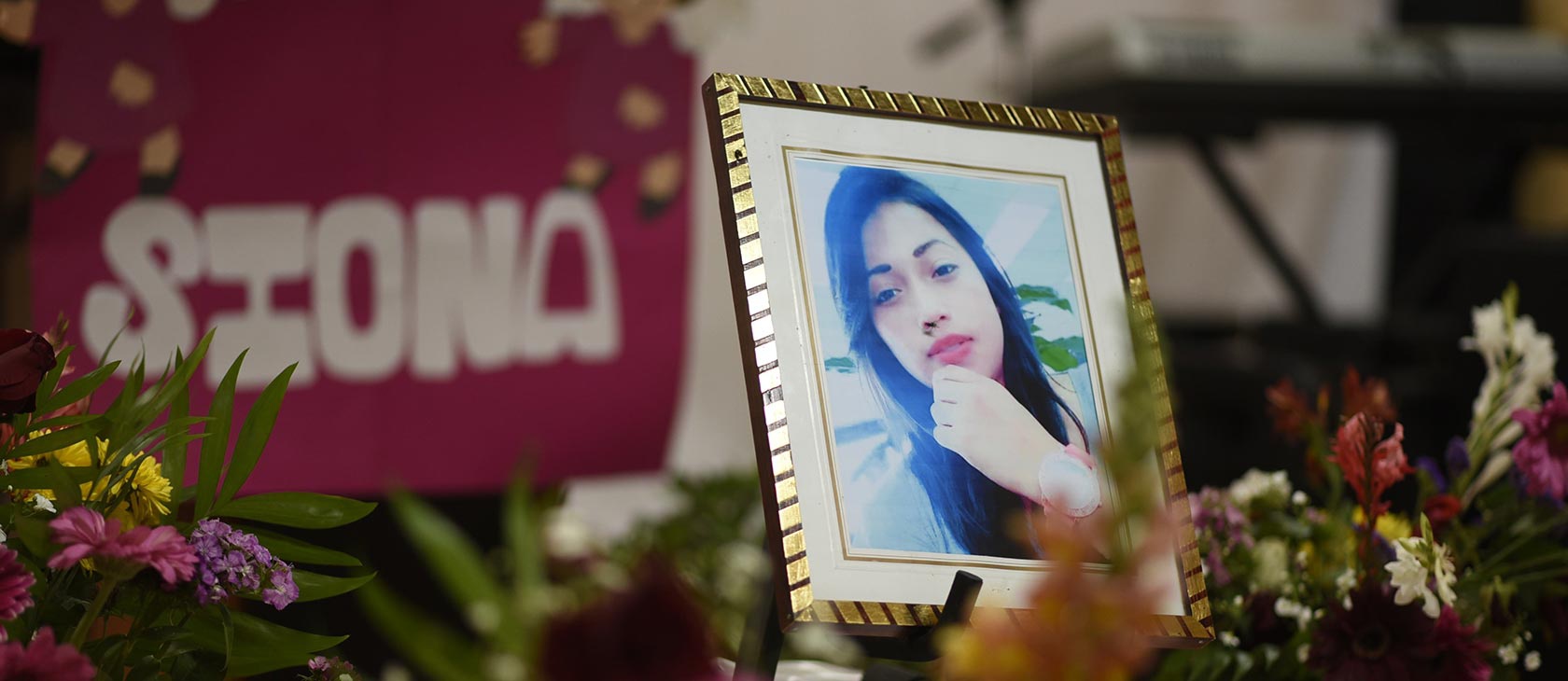The protesters were mostly high school and university students. They carried black balloons, dozens of them – one for each teenaged orphaned girl who died while in police custody in a March 2017 schoolroom fire. Walking in solidarity with the hundreds of other protesters down Guatemala City’s 6A Calle was a small group of Serbian Orthodox Christian nuns. The abbess of the monastery, Madre Inés, told me that she and the nuns of Holy Trinity Orthodox Monastery in Villa Nueva, Guatemala came to the crowded Constitution Square in front of Palacio Nacional de la Cultura to demand those in the Guatemalan government responsible for the girls’ death actually be held responsible.
Advocating for the well-being of Guatemala’s orphans comes naturally to the nuns. For many years they operated the Hogar Rafael Ayau. Named in honor of Madre Inés’s great, great grandfather Don Rafael Ayau, who in the 1850’s founded the first orphanage in Guatemala City ("The Home of Mercy"), the Hogar Rafael Ayau is less than a 30-minute drive away from the peace and quiet of the nuns’ rural monastery. But the Hogar is located in the noise of Guatemala City’s crime-infested Zone 1. Changes in Guatemalan law led to the end of the hogar as a sanctuary for the orphaned girls and boys who found a safe and loving home behind its walls.
But changes in the law, didn’t change the nuns’ commitment to children. Even while their ownership of the Hogar Rafael Ayau was at risk, the nuns were offering job training programs, online education, schooling for children and help for local merchants. And so, when 19 girls (the final number would later climb to more than 40), died in an inferno at the Hogar Seguro Virgen de la Asunción in San José Pinula, it was only natural that the nuns would make their voices heard.
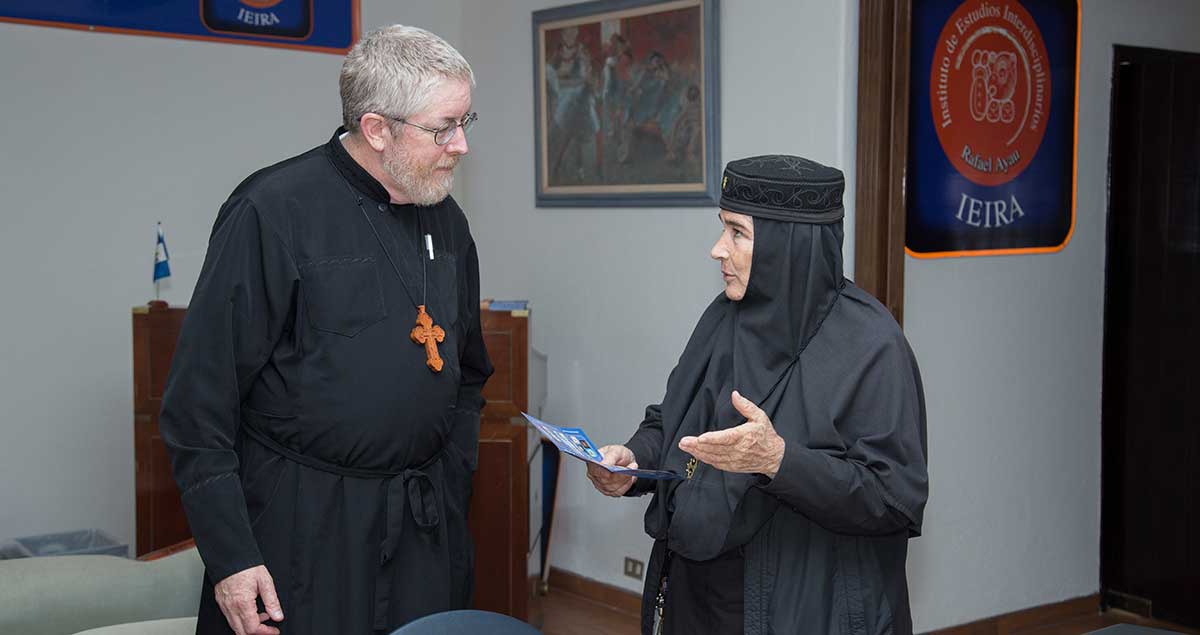
Sadly, no one heard the girls when they complained of abuse and intolerable conditions in the state-run orphanage where they lived. Frustrated with the lack of any improvement, the girls ran away from the facility only to be rounded up by police and confined under lock and key. It was while confined that the girls died in the fire. Although circumstances were chaotic, by most accounts the girls themselves started the fire.
Together with the other protesters, the nuns came to Constitution Square to demand government officials acknowledge their part in the death of the girls. They wanted to see the government take steps to correct the deeper, more pervasive social problems that plague Guatemala. Indeed, the country suffers from a societal wide lack of personal responsibility.
In a public letter released after the fire, Madre Inés pointed to “fiscal centralization” as the root of the problem. Through its use of tax money, she wrote, the Guatemalan government is creating “monstrous cities” that attract “people from the countryside” who come in search of “better jobs” and more economic opportunities.
As in other parts of the world, the unintended consequence of these policies is that newcomers to the city, “sever ties with the families” and “lose their sense of belonging,” all while never finding the economic success that inspired their move in the first place.
From her point of view, families are destroyed and “thousands of children ‘displaced.’”
It was these displaced children who died in the fire in a state-run home for minors on the outskirts of Guatemala City.
And so those black balloons ask, Who is to blame? Who is responsible? I went to Guatemala to find out. The answer I came to understand is that many people were responsible even if they were not equally so.
Shared responsibility, limited blame
There is first of all the girls themselves. They ran away from their institutional home. But acknowledging this shouldn’t blind us to the culpability of the adults who put the girls in this situation.
And so those black balloons ask, Who is to blame? Who is responsible? I went to Guatemala to find out.
Then there are the parents, though not all of them. Some were simply unable to financially care for their daughters. Others, Francisco Goldman reports in his March 2017 New Yorker article, “felt that their daughters were in need of discipline” they couldn’t provide. Other parents sent their daughters to the Hogar “to protect them from the notorious mara street gangs that terrorize poor urban neighborhoods.”
Still other girls were there by court order “because they’d been abused by family members, or because they were living on the streets.”
The immaturity of the girls and the good intentions of parents, social workers and the courts who hoped to spare children from the effects of poverty and crime all played a role in the events leading up to the fatal fire.
But as Madre Inés suggests, outside NGOs who lobbied to change government policy also had a central role in the deaths.
UNICEF and the naked public square
In our conversations, Madre placed the blame for the girls’ death in large part on the shoulders of UNICEF representatives who lobbied Guatemala to abolish “all volunteer” [that is, private religious and secular] residential care homes even though these homes “cost the government nothing.” The rationale is to protect children from illegal adoptions by “corrupt, privately run international adoption agencies”
While the abuses are real, researchers such as Harvard Law School professor Elizabeth Bartholet have argued that shutting down international adoption programs in Guatemala deprives thousands of children per year of the chance to grow up in nurturing homes, rather than life-destroying orphanages. “That’s an evil that should count for more,” she writes.
In 2007, National Center for Adoptions (Centro Nacional de Adopciones or CNA) took over all adoptions in Guatemala. This is how the girls would eventually come to live, and die, at Hogar Seguro.
Madre Inés says even though she and others sounded the alarm that government orphanages we “mis-managed and abusive” those in charged “turned a deaf ear to the warnings.” It was this combination of “good intentions and irresponsibility of UNICEF” and the Guatemalan government that “produced a macabre outcome, a fire that devoured” the lives of teenage girls who had every right to expect that they would be safe while in the government’s care.
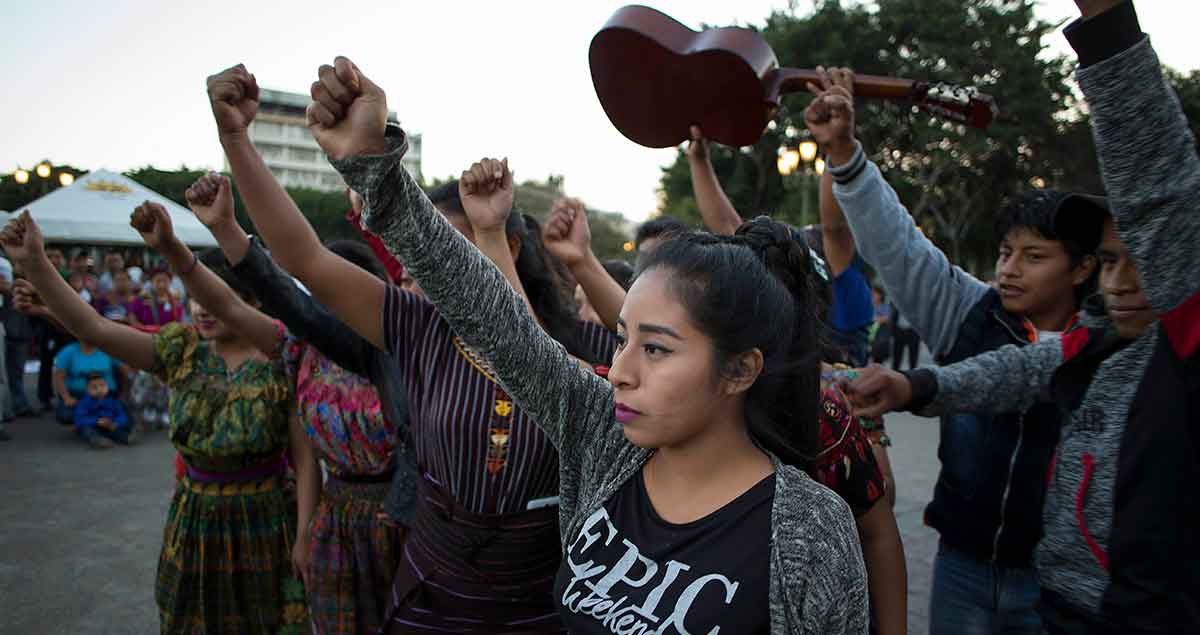
One hopeful sign is that in the aftermath of the fire the Guatemalan government is turning to private, religious affiliated groups to help care for orphans. But the government’s willingness to at least consider partnering with Evangelical Christians doesn’t extend to Roman Catholic ministries even though they represent the country’s largest religious tradition. Much less did the government look for assistance from the Orthodox Christian Madre Inés and her nuns.
Orthodox Christians make up only a tiny portion of Guatemala’s religious believers. But though she represents a small community with few resources, on the day of the fire, Madre Inés contacted President Jimmy Morales, offering to care for the children “displaced by the fire.” At the same time, she said that “at the insistence of Guatemalan citizens, a petition to the government was developed to demand that the government change back to the original civil law to allow adoptions and to restore the oversight of abandoned children to the Judges of the Juvenile Court in order to stop the abuses” that led to the fire.
Instead, the Attorney General of Guatemala filed a lawsuit against the nuns in what would ultimately turn out to be an unsuccessful attempt to confiscate the Hogar Rafael Ayau. Rather than taking steps to correct the factors that contributed to a national tragedy, the government acted to punish its critics.
The government's action is based on the fact that legally the nuns do not own the orphanage. Instead, the nuns have what is called in legal jargon a “usufruct” which gives them the right to use the property “to do works of mercy” for a term of 50 years. Unlike outright ownership, the usufruct describes a situation in which a person or group of persons is allowed to use the real property (often land) of another but without any legal claim of ownership to the property.
Though the nuns eventually won their court case, all is not well for them. The usufruct wasn’t given to the monastery but personally to Madre Inés. This was 20 years ago and so while the usufruct is good for another 30 years, it is not outside the realm of possibility that with Madre’s death, the nuns may once again face the loss of their property.
With this loss would also come the loss of the new works of mercy the nuns do. But even while facing legal challenges to their ministry, the nuns didn’t stop caring for the youth of Guatemala.
Mercy outlawed but not undone
As the lawsuit worked its way through the courts, and threatened the long-term viability of their ministry, the nuns continued to care for underprivileged or abandoned children at the Hogar Rafael Ayau. To understand the importance of their work—and the odds they face daily—it helps to keep in mind where in Guatemala City the hogar (Spanish for “home”) is located.
Zone 1 an extremely dangerous part of the old city. I slept there my first night in Guatemala.
My room was Spartan. Seeing the photo I posted on Facebook, one of the parishioners at the church I pastor in Madison, Wisconsin, (who was born in the former USSR) said it looked like “a Soviet hotel.”
I’m a lightly sleeper so it wasn’t any surprise that I woke up about 3 a.m.
What was a surprise was the “pop, pop, pop” of gunfire just outside my room. Suddenly my “Soviet hotel” with its cinderblock walls and steel roll down shades over the windows seemed a much nicer—and safer—place to spend the night.
It is in this crime infested neighborhood that the nuns operate First Special Education Public School, for children with developmental and intellectual challenges.
Like my room, the school is basic by American standards. But the children are joyful, sweet and affectionate. They were also very forgiving of my bad Spanish (though somewhat incredulous that an adult—and a priest at that—had such trouble expressing himself).
Along with the special school, the nuns also train in the trades at the Municipality Workshop School. Over 100 students (more and more of whom each year are young women) who find themselves outside the formal education system are learning the skills necessary to find employment in the construction trades as carpenters, electricians and landscapers.
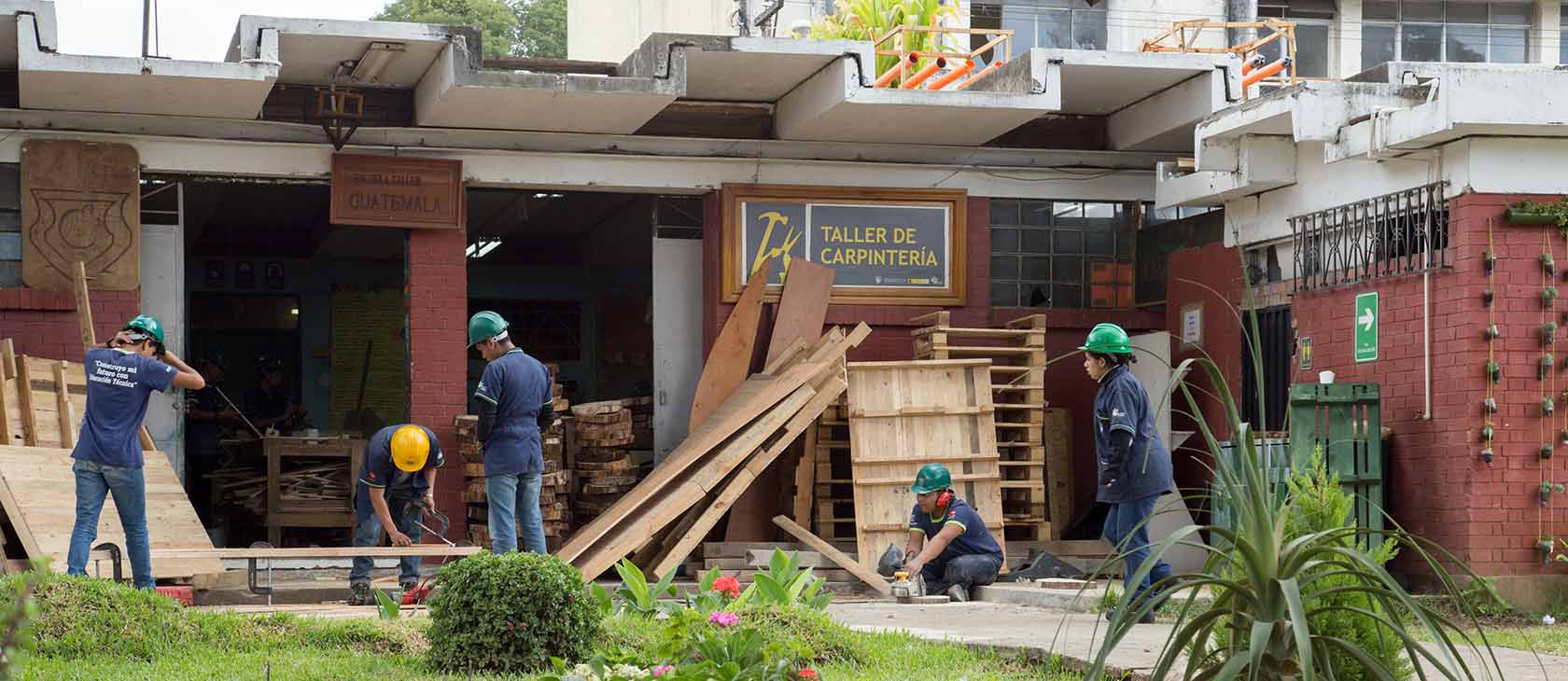
The school isn’t simply concerned with providing vocational education. The teachers and administrators also care for the physical health of the student. In addition to onsite medical and dental clinics, the students receive nutritional counseling to correct the unhealthy eating habits that frequently plague the poor. In addition, the schools are run in co-operation with the municipal government. This is more than a little counterintuitive—even odd -- because the very libertarian Madre Inés half-jokingly describes herself as an “anarchist.”
Given this and her criticisms of the Guatemalan government, the monastery’s partnership with the city surprised me. After all this is the woman who would later tell me that state sponsored school “teaches us to be government employees.” To exchange the freedom of moral responsibility for our own lives for the security of government “payroll,” she says.
But it’s about the kids, not ideology. None of Madre’s antipathy for government bureaucracy and dependency keeps her from working with anyone who is willing to work with the school to help kids. This is more than the nuns being pragmatic. Much less is there anything sentimental in what they do.
Madre’s political criticisms are pointed. “Our government, the education we receive is to be slaves, to make it black and white. But we are taught to be slaves,” she says.
These comments though are leavened by the Gospel. The nuns understand, as Madre told me, that the people of Guatemala grew up in a “system that makes slaves.” She and the nuns, in a very real way, work with the system to subvert it by educating people for freedom.
Her fathers’ daughter
As I’ve thought about the situation in Guatemala, I have come to realize these public-private partnerships do more than help the nuns do good things for children. They also teach those who work with the nuns how to acquire the skills needed for a free and virtuous society.
Given her commitment to the Gospel and her personal history, this isn’t as surprising as it may seem.
Madre is the daughter of Manuel Ayau, the founder, former rector and professor of economics at Universidad Francisco Marroquín (UFM) a private university in Guatemala whose mission is "to teach and disseminate the ethical, legal, and overall economic principles of a society of free and responsible persons."
Building of the foundation of the Gospel, her father’s free market economics have influenced how Madre and her fellow nuns live the common life and minister to the larger community through co-operative relationships rooted in comparative advantage and free exchange.
In our conversation about this, Madre once again is very direct with me. “God,” she says, “does not give material wealth.” It is rather the case that we “create the wealth” based on the gifts God has given each of us.
We “create the wealth” based on the gifts God has given each of us.
Wealth creation is not an individualistic process, from the nuns’ point of view. Whether material or social, it is dependent upon the correct understanding and concrete application of comparative advantage. In other words, each human person contributes something of their own unique talents, experience, gifts. In sum, this comparative advantage contributes to a flourishing society based on the freedom to trade, to build, to earn and to collaborate. For Madre, human beings create wealth “naturally” through our work. “God allows us to create wealth,” she observes. “Now, when we become obsessed with what we have created, of course we make our idols.”
We create our idols when we forget that everything we have, comes from God, she adds. “I didn’t make my hands. I didn’t make my brains. So, the instruments to make wealth, I didn’t make them. “
Like every other human being, Madre says her vocation is “to make wealth. It is my obligation, if I can say that.” She sees her responsibility in making wealth not for herself, but for the sake of others.
Receiving the gift God’s given
This nuns’ embrace of the idea of a free market is not an end in itself but at the service of the Gospel. The emphasis on free exchange, comparative advantage, and cooperation all find their meaning in in the harmony that Christ brings out of this all. That harmony begins in the monastery and flows outward. This happens through their myriad cooperative projects.
For example, the monastery rents, at below market value, commercial property to small business owners. This isn’t a subsidy but an investment the nuns undertake for the economic re-vitalization of Zone 1. It’s also a practical education for merchants in entrepreneurship, free market economics and a formation in the virtues freedom requires.
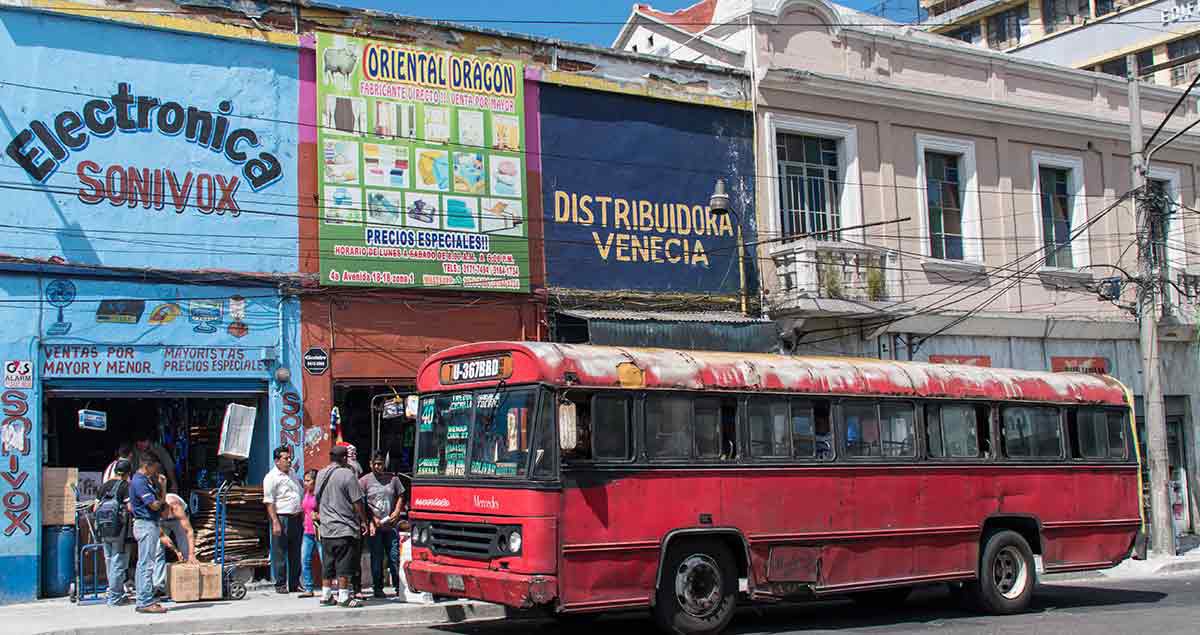
Another project is the Rafael Ayau Institute of Interdisciplinary Studies (IEIRA). An online school, IEIRA provides a “private, apolitical” education in “the principles of freedom, truth, justice and harmony.” True to their commitment to personal freedom, students study at their own pace taking as much time as they need to master content before moving on to the next level. Coursework includes not only economics but also natural and environmental sciences, conflict resolution, education, the history of Mesoamerica and Sacred Scripture.
Overseeing these different projects as well as the schools all while being faithful to their monastic vocation, Madre says, “is not easy.” And so, she says, “We try. And we have to try all the time, always. but it’s not easy. But it’s not hard either. It’s just a matter of where you’re going to focus” your time and energy.
They draw strength from the God Who “made everything. He’s there before us. We come into the world to discover Him presently. And to enjoy Him presently.”
The nuns are so willing to cooperate, Madre Inés explains, “because the world is a gift from God for us. So, we’re not going to go and say, ‘No, I just want this little piece.’ No. He gave us everything. So, we have to enter into that gift that He has given us. And find the Holy Trinity present here, there, there, there.”
Teaching freedom
It wasn’t until we left behind our discussions of the monastery’s myriad projects and challenges the nuns face and focused on monastic life itself that I understood what Madre meant by “responsible.” What sounded to my ears like something heavy and even oppressive became, in Madre Inés’s telling something very different. Being responsible is the first step in learning to be free. And freedom is the wellspring of happiness.
We are born with the potential to be free but freedom itself “has to be taught.” And we teach freedom, Madre told me, by holding “people responsible” for their decisions.
What I heard as something potentially negative, something to shy away from, was in fact a kindness. In calling people to be responsible, Madre was extending an invitation to freedom and a happy life.
Being responsible is the first step in learning to be free. And freedom is the wellspring of happiness.
“You have to be happy,” Madre says. “We don’t live that many years. So, the time God gives us here we have to be happy. But if we're irresponsible, if we are not free, if we don’t live in harmony, how can we be happy? It’s impossible!”
I asked Madre how this works in the monastery. What does it mean for the nuns to be responsible and so truly free? How, in other words, does she help the nuns become happy?
Obedience is a word that most of us just don’t like. We don’t want someone telling us what to do. But this isn’t what Madre Inés means by obedience. For her obedience is the gateway to a life of responsibility and so freedom, happiness and, ultimately, salvation.
In the Eastern Orthodox Christian tradition, she explained, obedience takes the form of the nun asking for and receiving a blessing from the abbess, the superior of a community of nuns. A blessing though isn’t “permission.”
For a nun to ask for a blessing means to ask the abbess to acknowledge “you have to decide” and accept responsibility for some task in the monastery or (for a layperson) in your personal life. You ask that God bless your decision and to sustain you in the work you have freely undertaken.
Whether she is talking with one of the nuns or a layperson visiting the monastery, when Madre Inés talks about “blessings” she means confirming the personal discernment that a person is “mature enough and responsible enough to make her decision.”
A deeper tradition
To say that the girls’ tragic death in the school room inferno last year wouldn’t have happened if they were cared for by a private secular or religious orphanage is unfair. Incompetence and malice aren’t exclusive to government bureaucrats. And while there are some significant differences, both private and state sponsored social service agencies can—and frankly, do— coerce compliance. This is certainly the case when dealing with a vulnerable population like orphans.
What Christians do have, however, is a long history of working with children who do not have parents. It wasn’t UNICEF or some NGO that invented orphanages, it was the early Church. This represented a revolution in child welfare in its time. The historian Timothy Miller in his 2005 book The Orphans of Byzantium: Child Welfare in the Christian Empire, writes, “From liberal and conservative politicians, to psychologists, social workers, and progressive social planners, almost no one considers the past as a source of practical experience recording successes and failures, brilliant reforms and costly setbacks.”
Miller goes on to say that it is “imperative not to ignore the vast fund of information that the past has to offer concerning social programs, and no ancient or medieval state was more inventive in the field of social welfare than the Christian Empire of Byzantium.”
The nuns of Holy Trinity Monastery, I think, have a direct, living connection to this ancient, deeper and broader mode of care that Miller would have us adopt. Practically and theoretically, the nuns have brought this ancient tradition into dialogue not only with economics and the natural sciences, but they have done so in a frankly ecumenical spirit that, as Madre Inés told me, is willing to work with any and all who are willing to partner with them in their care for those in need.
In a way, the government closing the orphanage has broadened the ministry and influence of Madre Inés and the nuns. And, in 30 years, when monastery and the government once again turn to the question of property rights, they will God willing again remake their ministry.
Image Credit: "Brightly colored shops in Guatemala City's Zone 1" (CC BY 2.0).



